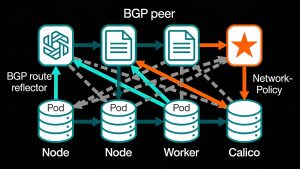The Critical Role of Accurate Timekeeping in Modern Systems
Accurate time synchronization is fundamental to the operation of distributed systems, financial platforms, and event-driven architectures. Even a single second of discrepancy can result in significant failures, such as data loss, transaction errors, or inconsistencies across databases. For organizations that depend on sub-microsecond accuracy, like those using the Precision Time Protocol (PTP), the stakes are especially high.
Understanding Leap Seconds and Their Impact
Leap seconds are periodic adjustments added to Coordinated Universal Time (UTC) to correct for irregularities in Earth’s rotation. These adjustments ensure that atomic time remains aligned with astronomical time. While essential for global timekeeping, leap seconds introduce unique challenges for systems that require uninterrupted, precise synchronization, particularly those relying on PTP.
Unlike the Network Time Protocol (NTP), which often uses a “smearing” technique to gradually introduce the leap second over a period of time, PTP demands much higher precision. Even minor deviations can result in synchronization errors, potentially disrupting critical operations.
Traditional Approaches and Their Limitations
Conventional methods for handling leap seconds, such as time smearing in NTP systems, are not suitable for PTP environments. PTP’s stringent accuracy requirements mean that even the smallest adjustment can cause timing errors. These errors may lead to failures in coordinated tasks, logging, and security protocols, making it imperative to find a solution tailored to high-precision environments.
Meta’s Algorithmic Leap Second Handling
Meta has developed a distinctive approach to leap second management within its PTP infrastructure. Instead of relying on manual interventions or traditional smearing, Meta integrates a self-smearing algorithm into its PTP service. This algorithm is implemented through the fbclock library, which introduces a “Window of Uncertainty” (WOU) by providing a range of possible nanosecond timestamps.
During a leap second event, the fbclock library incrementally shifts time by one nanosecond every 62.5 microseconds. This stateless and deterministic process enables systems to automatically and smoothly accommodate leap seconds, maintaining the high level of precision required for PTP synchronization.
Benefits and Trade-Offs of Meta’s Approach
Meta’s self-smearing technique offers several advantages:
- Seamless Leap Second Handling: Systems can automatically adjust without manual intervention, reducing the risk of human error.
- Maintained Precision: The approach preserves the sub-microsecond accuracy demanded by PTP environments.
- Reproducibility: The stateless design ensures consistent results across distributed systems.
However, this method also introduces certain trade-offs. When integrating with systems that use alternative smearing strategies-such as NTP’s quadratic smearing-there is potential for temporary discrepancies during the smearing period. These mismatches can pose synchronization challenges, particularly in hybrid environments where both PTP and NTP are in use.
The Broader Context: Industry Push to Eliminate Leap Seconds
The challenges posed by leap seconds have led to a growing consensus in the tech industry to phase them out entirely. Meta, alongside other major technology companies, supports initiatives to abandon the leap second, arguing that the operational risks and complexities outweigh the benefits. Eliminating leap seconds would simplify timekeeping infrastructure and reduce the need for specialized handling techniques across platforms.
Conclusion: Setting a New Standard for Time Synchronization
Meta’s innovative leap second management strategy for PTP demonstrates how tailored, algorithmic solutions can address the unique demands of high-precision systems. By automating the handling of leap seconds and maintaining strict synchronization standards, Meta ensures the reliability and consistency of its distributed operations. As the industry moves toward a future without leap seconds, such advancements set the stage for more robust and simplified timekeeping across the digital landscape.
Read more such articles from our Newsletter here.



